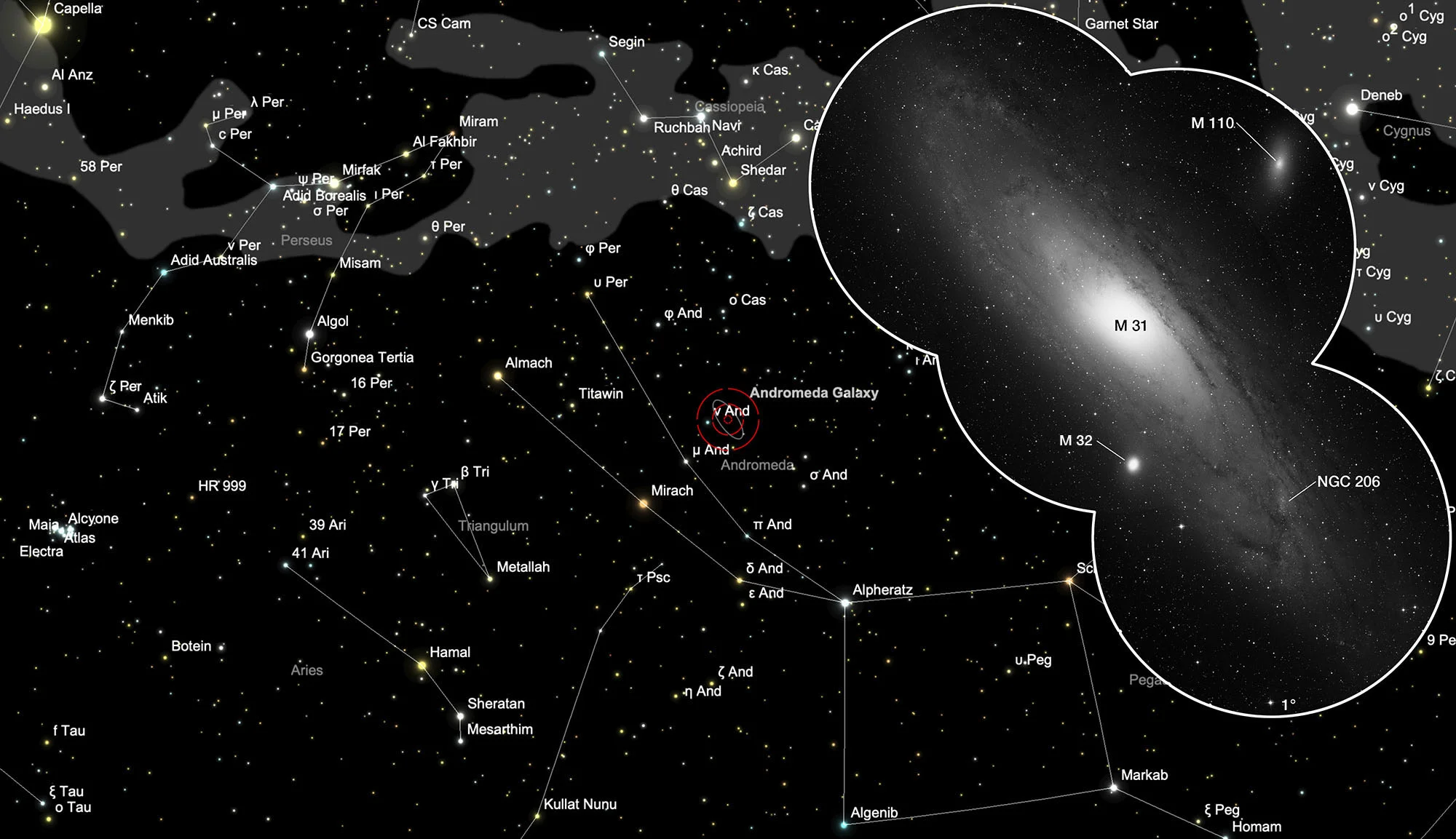Andromeda Galaxy (Messier 31)
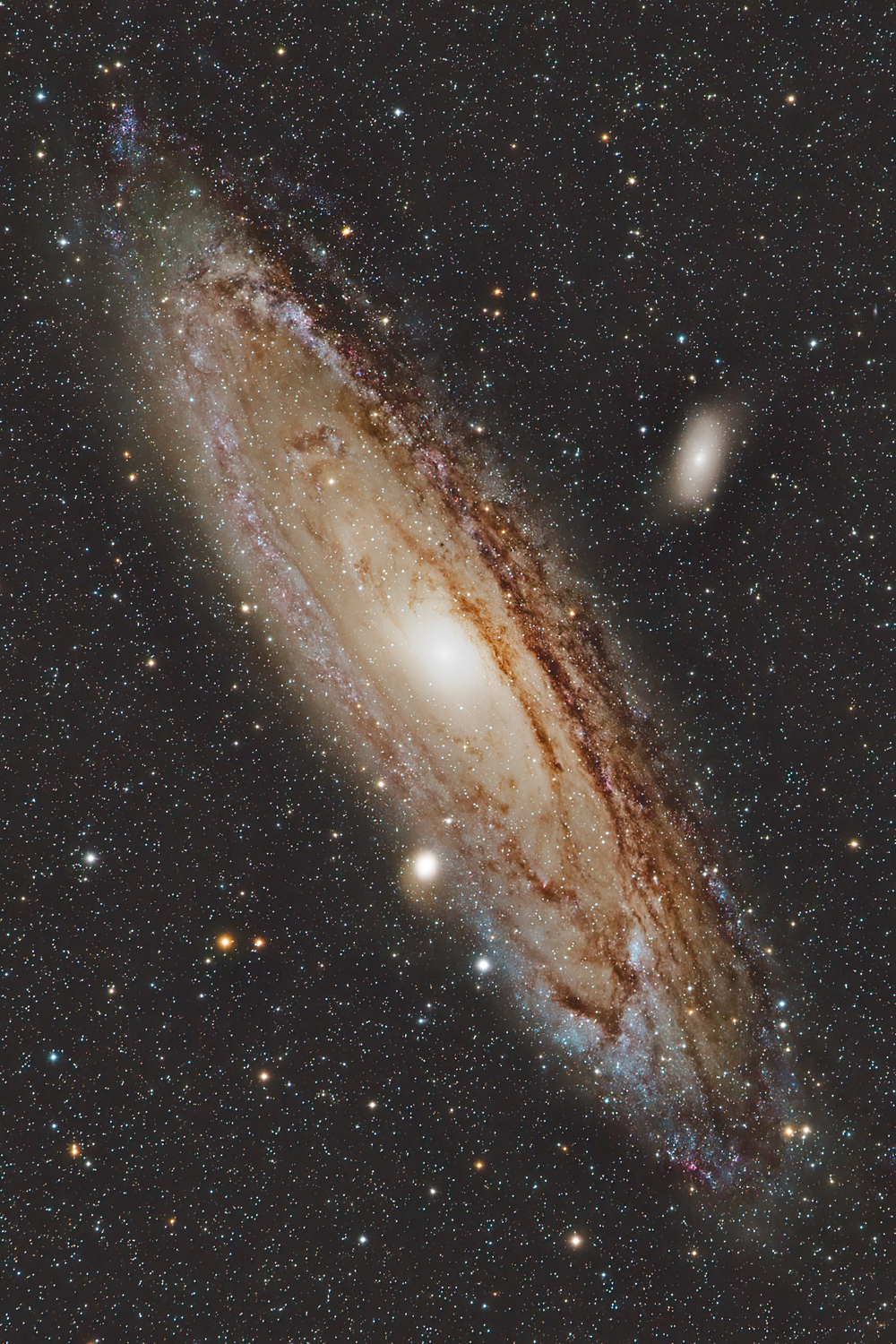
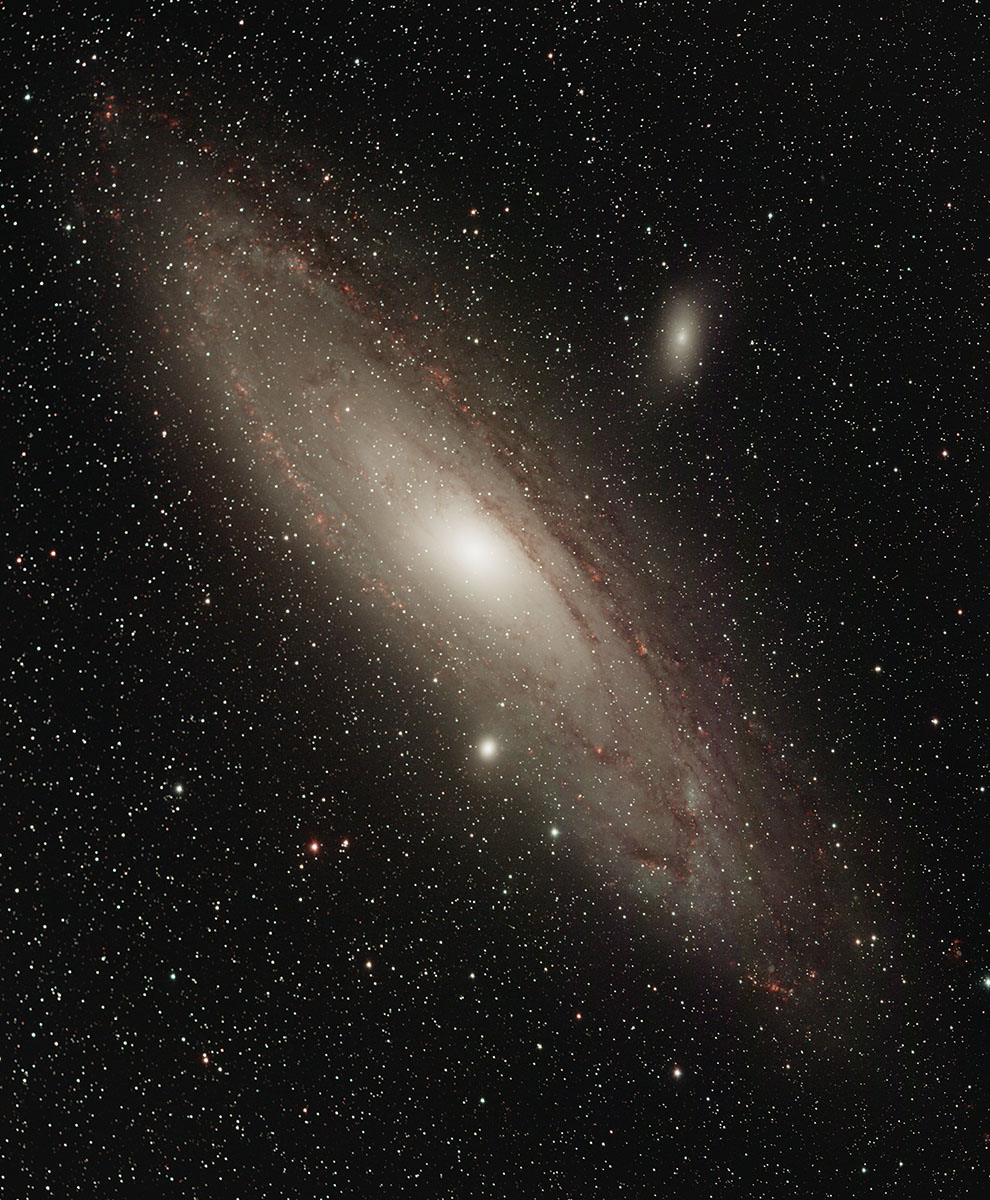
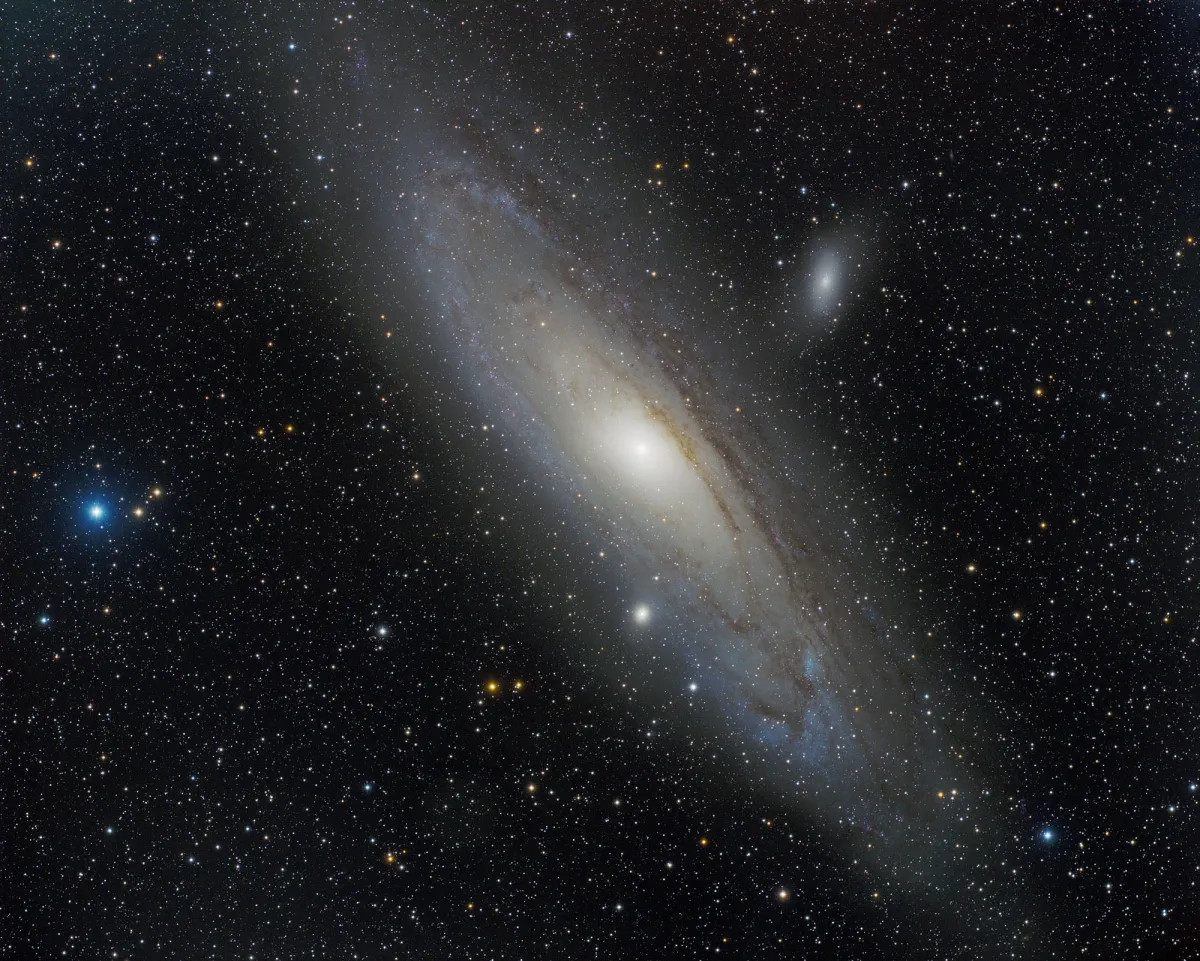
History
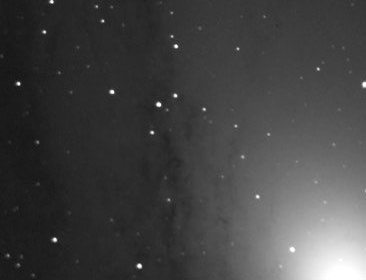
The Andromeda galaxy was already mentioned in 905 BC. Mentioned BC by the Persian astronomer Al Sufi and was marked on star maps as a "small cloud" long before the invention of the telescope in 1609.
The first observation with a telescope is usually attributed to the German astronomer Simon Marius in 1611 or 1612. He compared the faint glow to that of a candle shining through a horn. Early astronomers suspected that the «Andromeda Nebula» consisted of glowing gas and that a nearby planetary system was being formed. Spectroscopic analyzes nullified this theory and showed that the light must have come from countless stars.
The first indications of the true nature and dimensions of this spiral nebula emerged in late 1923 when several Cepheid variables were found. In a study of these Cepheids using the 100 inch telescope on Mount Wilson, Edwin Hubble finally proved that this must be an extragalactic object and deduced a preliminary distance of 900'000 light years. His publication ended the long controversy about nature this «spiral nebula». Later studies with the newly completed 200 inch telescope showed that the Cepheids in the Andromeda galaxy could be divided into two different populations with different luminosity and that earlier distance measurements were off by a factor of 2-3. [4] Current measurements on Simbad show a distance of 2.5 to 2.6 million light years and that M 31 is moving in our direction at a speed of around 300 km/s. [145]
Physical Properties
M 31 is the largest and closest to us spiral galaxy - apart of course from our own galaxy, the Milky Way with its companions. It owns four small, elliptical companion galaxies, which are located in their gravitational field. Two of them (M 32 and M 110) are in the immediate vicinity. The other two (NGC 147 and NGC 185) lie around 7° to the north in the constellation Cassiopeia. NGC 206 is a bright star cloud within the galaxy M 31. Furthermore, M 31 is home to many globular clusters, of which G 1 is the brightest.
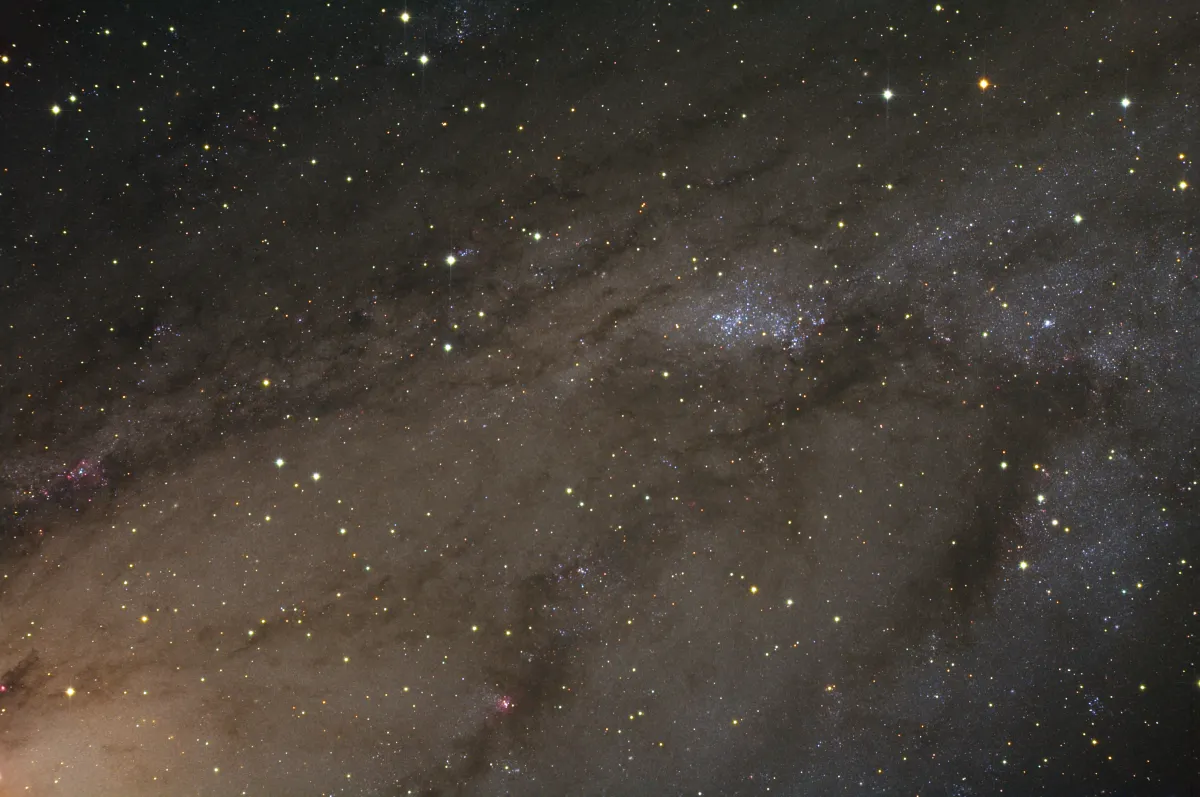
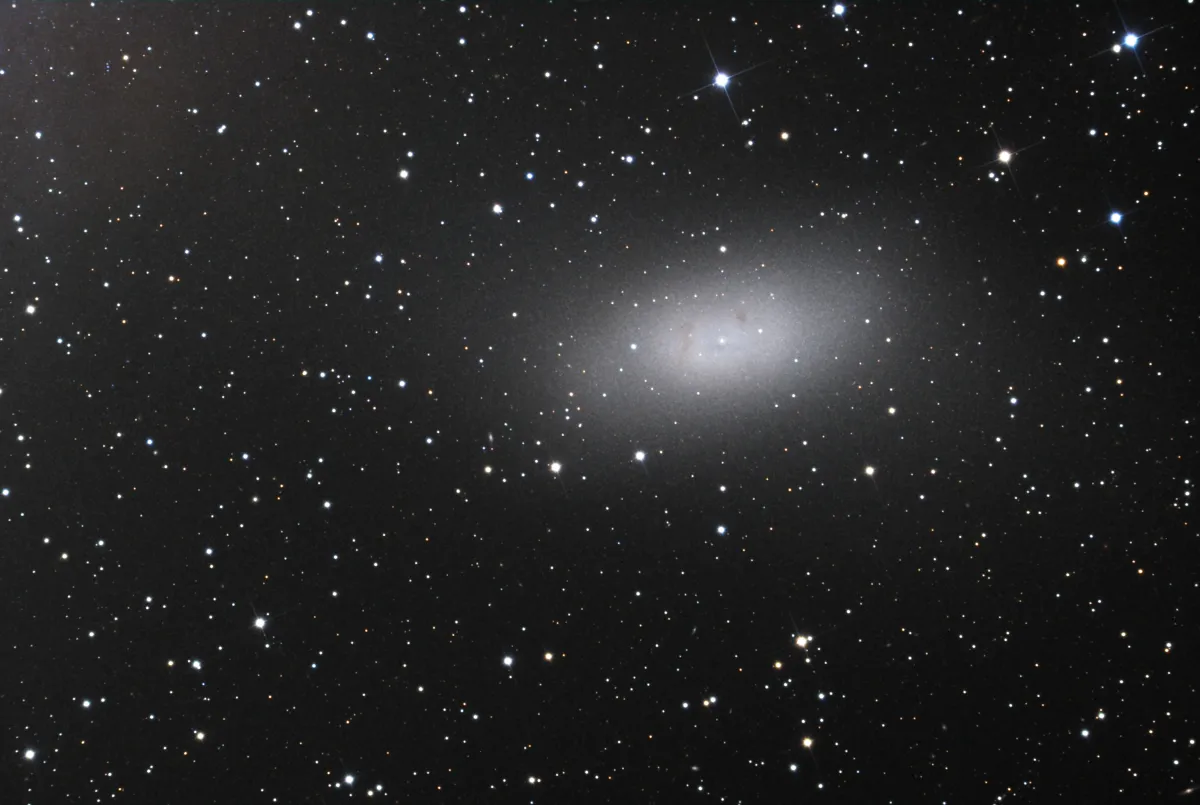
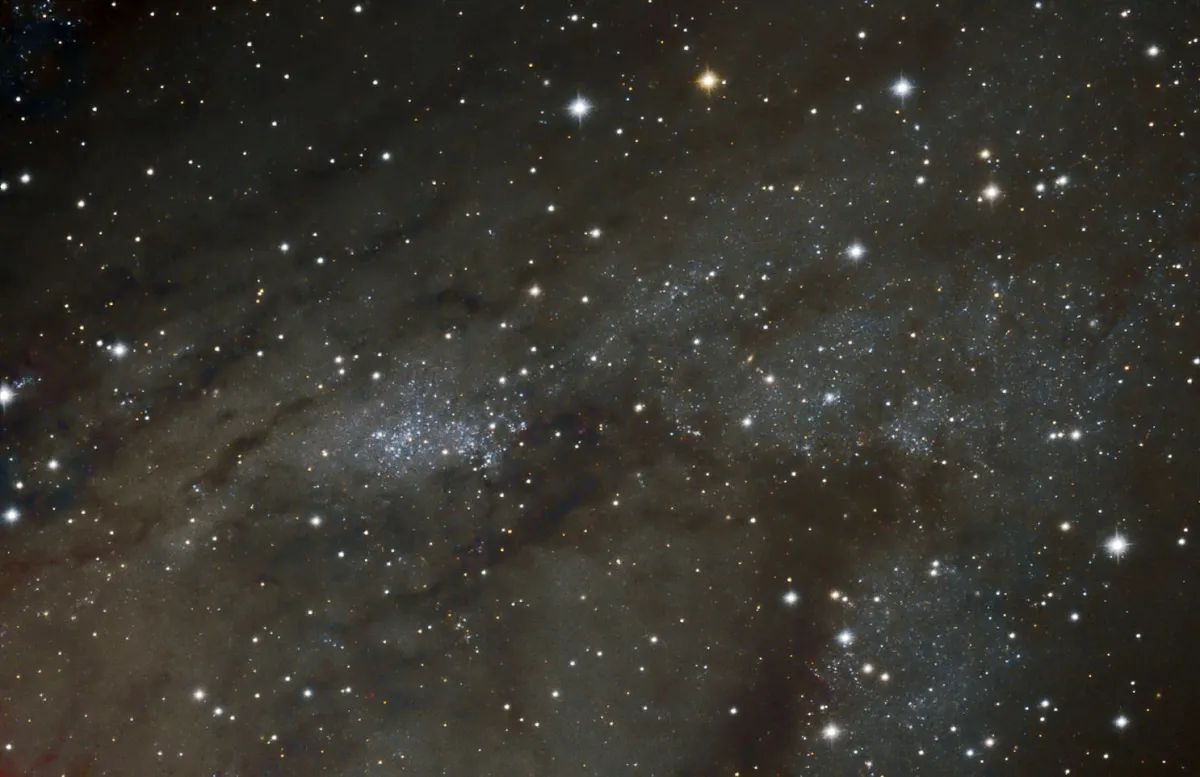
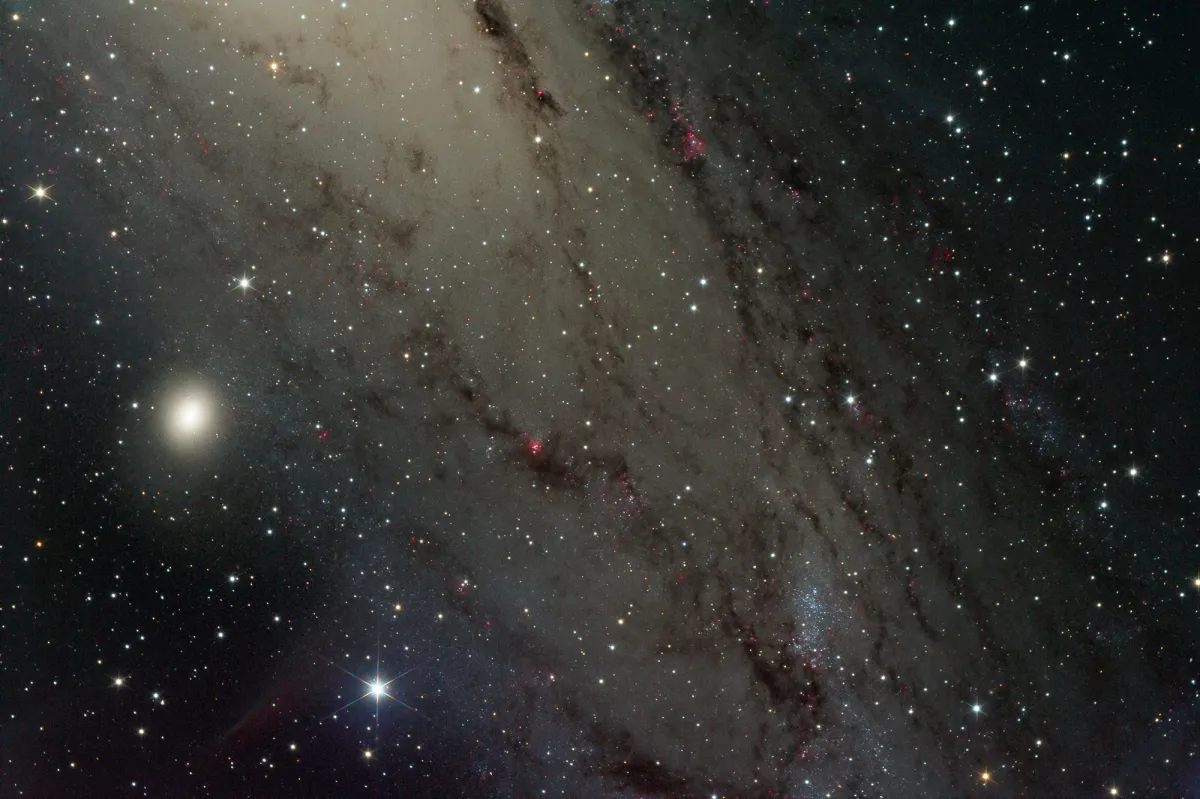
| Name | RA | Dec | Type | bMag | vMag | B-V | SB | Dim | PA | z | MD | Dreyer Description | Identification, Remarks |
|---|---|---|---|---|---|---|---|---|---|---|---|---|---|
| NGC 147 | 00 33 11.7 | +48 30 26 | Gx (E5/P) | 10.5 | 9.5 | 1.0 | 14.5 | 13.2 × 7.8 | 25 | -0.000644 | 0.730 | vF, vL, iR, gsmbM * 11 | h 29; GC 72; UGC 326; MCG 8-2-5; DDO 3; CGCG 550-6 |
| NGC 185 | 00 38 57.6 | +48 20 14 | Gx (E3) | 10.1 | 9.2 | 0.9 | 14.4 | 8 × 7 | 35 | -0.000674 | 0.670 | pB, vL, iR, vgmbM, r | WH II 707; h 35; GC 90; UGC 396; MCG 8-2-10; CGCG 550-9; IRAS 00362+4803 |
| NGC 205 | 00 40 22.1 | +41 41 07 | Gx (E5) | 8.9 | 8.1 | 0.8 | 14.0 | 19.5 × 11.5 | 170 | -0.000804 | 0.800 | vB, vL, mE 165°, vgvmbM | WH V 18; h 44; GC 105; M 110; UGC 426; MCG 7-2-14; CGCG 535-14; IRAS 00376+4124 |
| NGC 206 | 00 40 32.3 | +40 44 18 | GxyP | 14.0 | 4.2 | 0.790 | vF, vL, mE 0° | WH V 36; h 45; GC 106; part of M 31 | |||||
| NGC 221 | 00 42 41.8 | +40 51 57 | Gx (E2) | 9.0 | 8.1 | 0.9 | 12.5 | 8.5 × 6.5 | 179 | -0.000667 | 0.770 | ! vvB, L, R, psmbMN | h 51; GC 117; M 32; UGC 452; MCG 7-2-15; IRAS 00399+4035; ARAK 12; Arp 168; CGCG 535-16 |
| NGC 224 | 00 42 44.3 | +41 16 08 | Gx (Sb) | 4.4 | 3.4 | 1.0 | 13.5 | 189.1 × 61.7 | 35 | -0.001001 | 0.790 | !!! eeB, eL, vmE (Andromeda) | h 50; GC 116; M 31; UGC 454; MCG 7-2-16; CGCG 535-17; Andromeda nebula |
Finder Chart
M 31 is located in the constellation Andromeda, only 1° 20' from the 4.5 mag bright star ν Andromedae. On 5 October it is in opposition to the Sun and crosses the meridian at local midnight.
Visual Observation
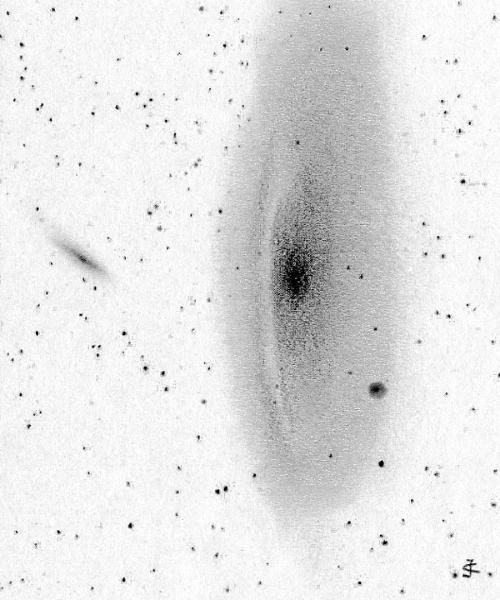
Visible to the eye as a blurred star or nebula. The full extent or size can be seen in the binoculars. The companion galaxies M 32 and M 110 can already be seen in a small amateur telescope. M 32 is almost spherical, while M110 appears elliptical. In addition to the bright core of M 31, the two black dust bands are easily perceptible in medium-sized telescopes. In larger telescopes, nodes or blurred globular clusters that belong to the galaxy become visible. [192]
